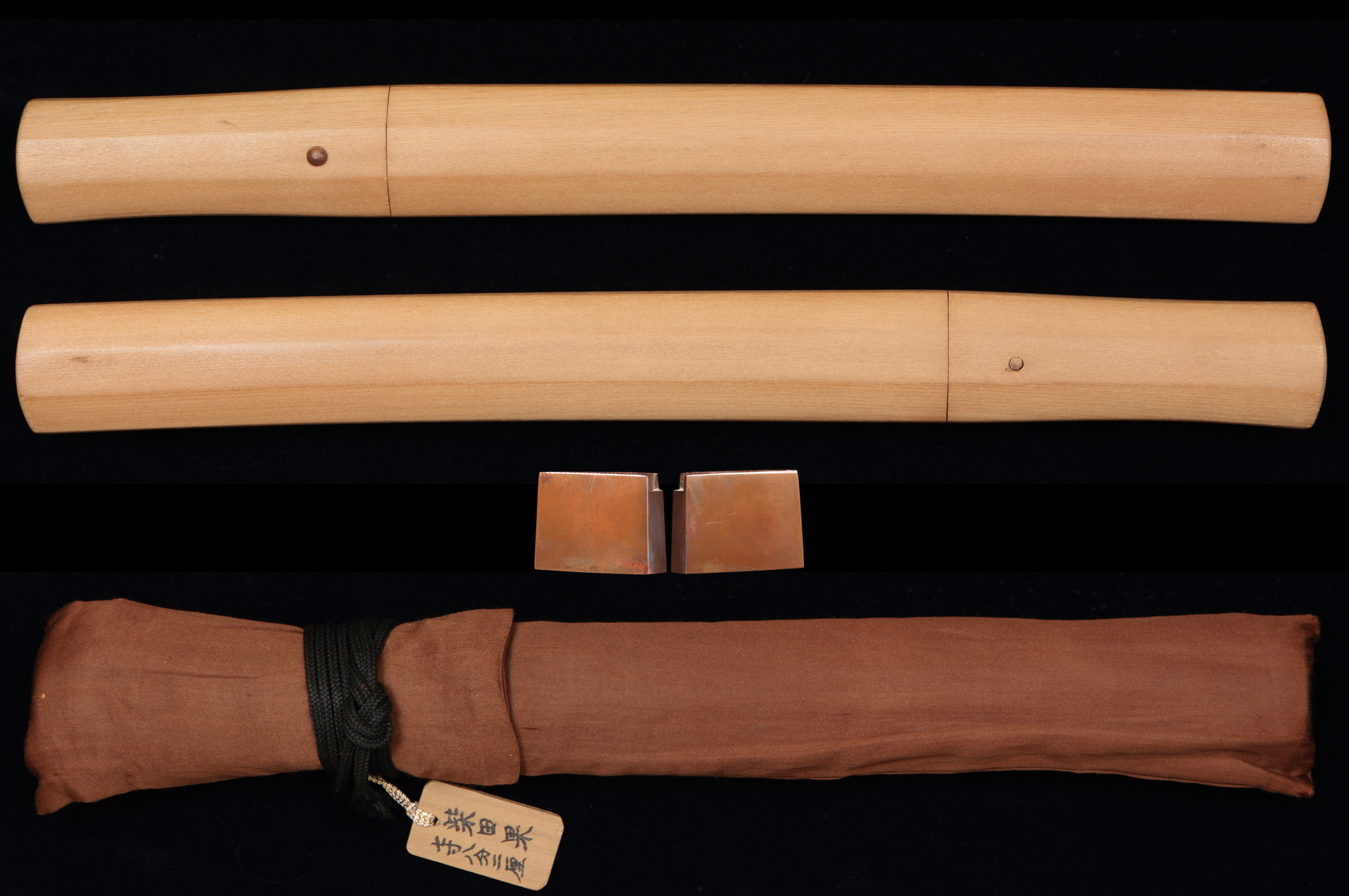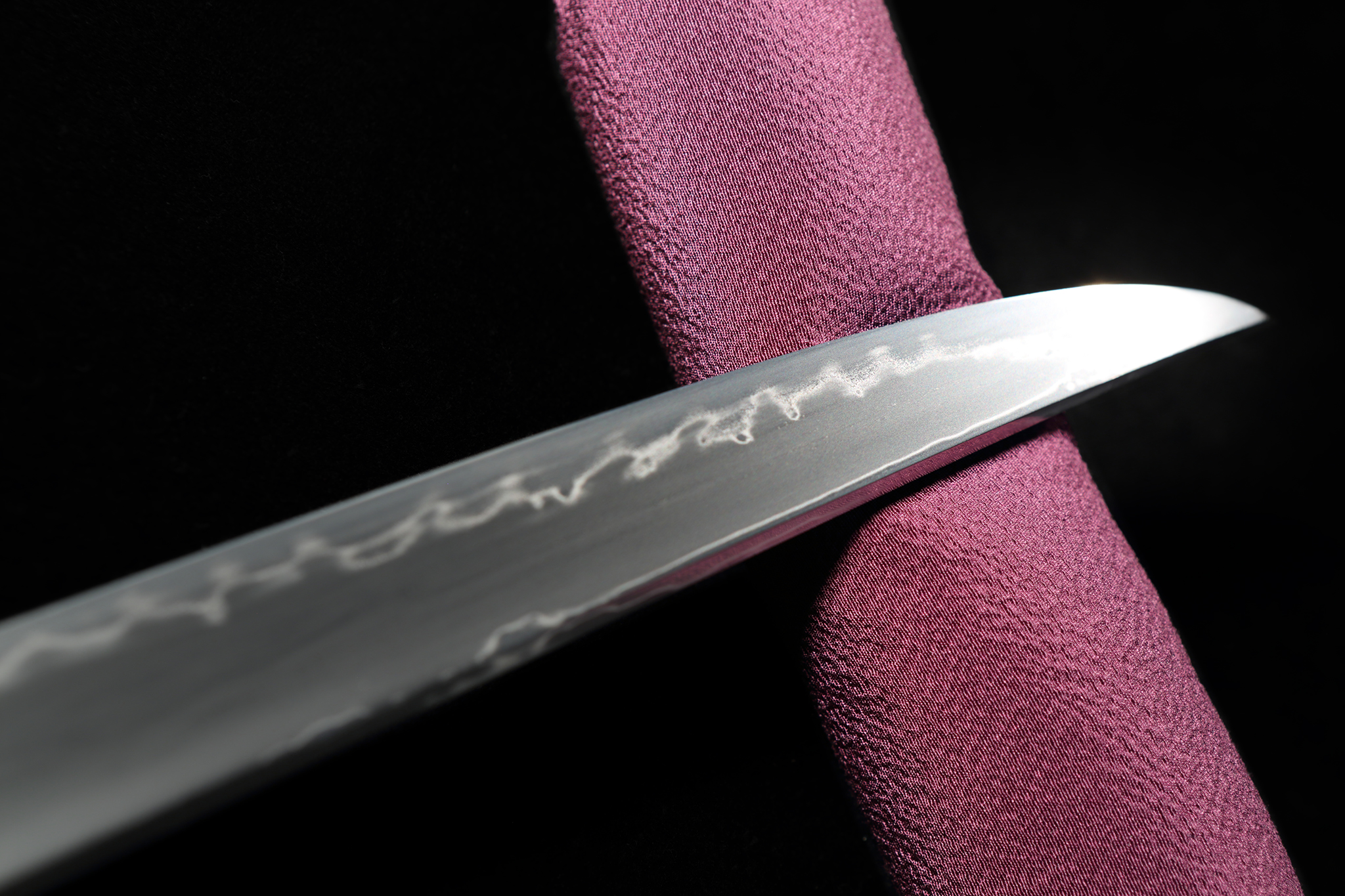
  |
Tanto, Shirasaya |
Shibata Ka
|
[ Signature ] omote : "為小坂田清治氏果作" ura : "昭和十八年三月吉日" |
[ Size ] Blade length 23,7cm (7 sun 8 bu 2 rin), sori - cm, moto-haba 2,96cm, moto-kasane 1,12cm, mekugi-ana(hole) 1, blade weight 272g , shirasaya length 38,5cm |
[ Period ] Shôwa (18) |
[ Prefecture ] Akita |
 |
[ Feature ] [ Highlight ] Nakago shape looks like machi advanced and saki picked. A little short, extreme thick kasane and fukura in kareru state are so specific. It is dynamic, bright gunome-midare hamon boushi has long tempered line, which reach to mune. |
[ Attachments ] Habaki (suaka-ji, single), shirasaya and bag of shirasaya. |
 |
[ Item number ] A201217 [ Price ] JPY 600,000 (shipping and insurance fee are not included) |
Please order by E-mail.

About TOUKEN KOMACHI
BACK
TEL&FAX +81-(0)3-5284-9014____E-mail : s_tsukada@toukenkomachi.com
|
Copyright © 2009 Touken komachi All rights reserved.
|